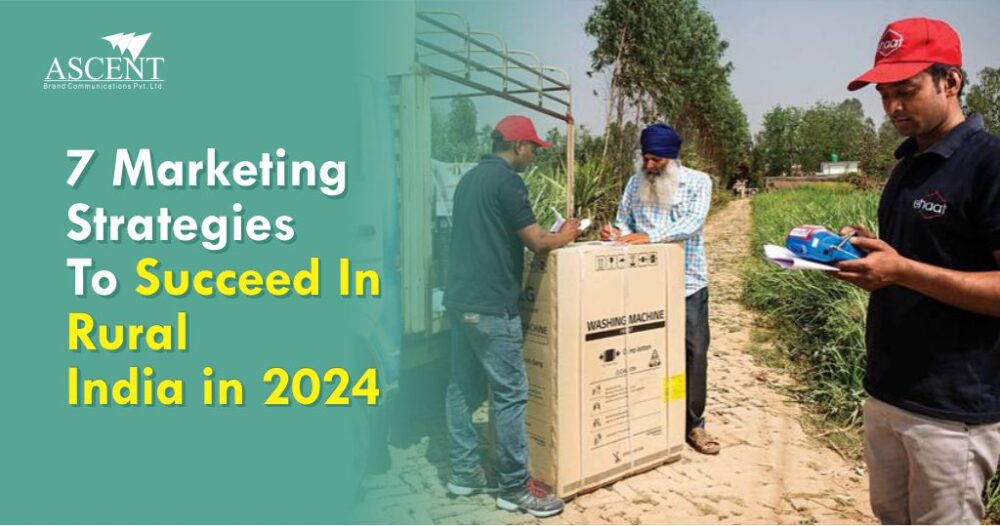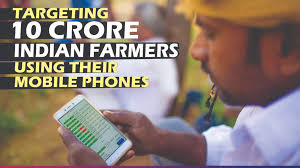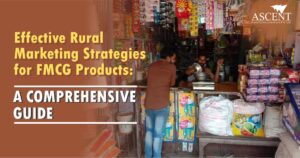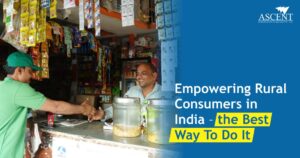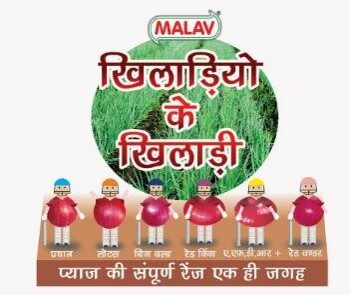Rural consumers have different dynamics in guiding their purchase decisions, unlike urban users. Therefore the strategies crafted to reach them have to be highly tailored to meet their expectations and needs.
As the rural economy in India continues to grow and now contributes close to 46% of the country’s GDP, companies are making changes to their marketing strategy to boost their bottom line. They are developing customized marketing strategies in order to steal a piece of this expanding market pie.
The widely distributed rural markets are highly fragmented, and thus cannot be treated as a homogeneous unit. Multiple factors like religious beliefs, climatic variations, food choices etc define the heterogeneous challenges in devising a single marketing strategy to reach rural consumers.
Though marketers are employing myriad strategies to succeed in rural India, a few important ones are:
Community Focused Initiatives
Rural communities are traditionally close-knit and follow peer action. This is relevant even to basic product choices. From toothpaste to cars, rural consumers follow the community lead in their purchase decisions. Thus, brands should partner with local influencers, participate in melas (fairs), and organize events to engage with potential customers directly.
Content in Local Languages
Any marketing strategy in rural India has to understand the heterogeneity of the market in terms of language and culture. So vernacular content is a must in marketing campaigns and promotional materials. Generic ads won’t work.
Picture that You’re a two-wheeler manufacturer. Instead of a national ad campaign in Hindi, create targeted video ads in local languages like Tamil, Marathi, or Bhojpuri showcasing the bike’s fuel efficiency on rural roads. Partner with local YouTubers or social media influencers who understand the regional audience for product reviews and endorsements.
Building Trust Through Transparency
The simplicity of rural life is also mirrored in the engagements they seek. Openness and honesty in product communications build bridges between the brand and the consumers.
So brands should be clear and honest in their communication while addressing concerns proactively.
An agricultural equipment manufacturer creating explainer videos in Hindi, Tamil, and Marathi showcasing the manufacturing process and highlighting the use of high-quality materials can build trust in rural communities.
Mobile Marketing
The high and ever-increasing penetration of mobile phones, including smartphones among the non-urban population points to the importance of having a mobile-first communication strategy in any rural marketing strategy. So make mobile your marketing hub!
A seed company developing a mobile app with local language interfaces where farmers can access information on sowing techniques, weather forecasts, and pest control specific to their region is an excellent marketing tool to reach rural consumers.
Leveraging Technology for Traditional Methods
While mobile marketing is crucial, don’t underestimate the effectiveness of well-placed hoardings, wall paintings, or even mobile vans with product demonstrations. So the focus is on blending old and new for wider reach.
For example a financial services company uses eye-catching hoardings in rural areas with QR codes that link to informative videos explaining their loan products and eligibility criteria. They create mobile vans equipped with tablets for loan application assistance and financial literacy workshops in villages.
E-commerce with a Rural Twist
While e-commerce is booming, consider cash-on-delivery options and microfinancing solutions to cater to rural buying habits. Brands can even look at partnering with local kirana stores for wider product reach and subsequent sales. So Make online shopping accessible.
Example: An online fashion retailer offers cash-on-delivery options and easy return policies for customers in rural areas. They partner with local Kirana stores as pick-up and drop-off points for online orders, allowing customers to try on clothes before purchase.
Focus on Value and Affordability
For the price-sensitive rural consumers, pricing products competitively, emphasizes value for money. Brands can also consider offering product bundles or smaller-sized packages to suit specific needs. So deliver a compelling reason to choose your brand.
To illustrate the above point, consider a smartphone manufacturer launching a phone with a long-lasting battery: perfect for areas with limited electricity. They also offer combo deals with mobile data plans and free screen protectors, catering to the value-conscious rural consumer. To go a step further in ensuring affordability, they can introduce smaller-sized phone memory options at a lower price point to fit specific needs.
Conclusion
The above are just a few marketing strategies that can be employed by brands to reach rural consumers. The list is by no means exhaustive in a dynamic and challenging environment with multiple forces at play. Newer avenues for promotion and reach pop up, as technology, taste and preference change at a rapid pace, and a smart marketer has to always scan the horizon for challenges and opportunities.

